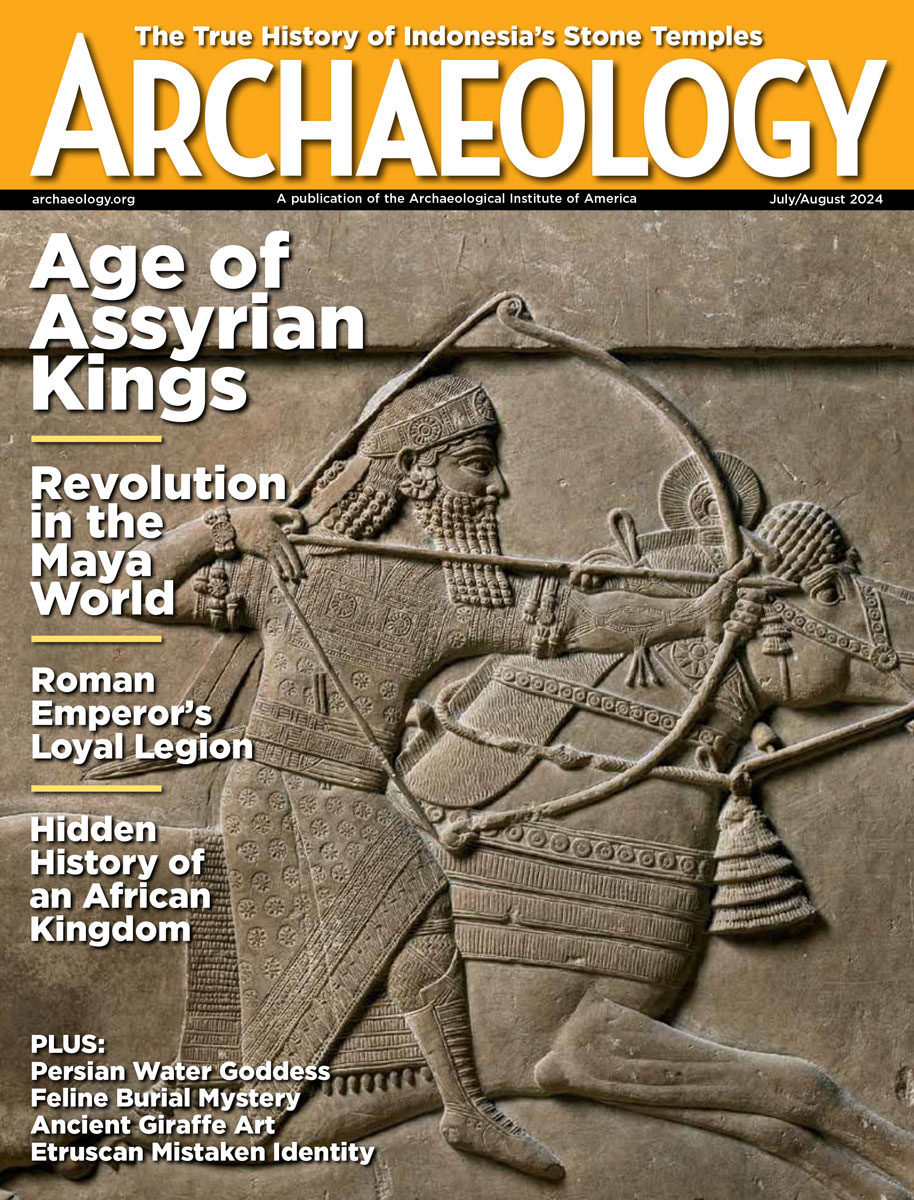Thursday, June 19
June 19, 2008
Romanian officials have handed over a 3,000-year-old pot to the Iranian Embassy in Bucharest. Border police recovered the artifact last year from a truck driven by an Iranian.Â
Two wine presses bearing large carved crosses were found at St. Catherine’s Monastery near Egypt’s Mount Sinai. Archaeologists think that the wine produced there was shipped to Christians abroad, beginning sometime between the fourth and sixth centuries A.D. Â
Archaeologist Nikolay Ovcharov reportedly uncovered the grave of a boyar wearing a large gold ring in Veliko Tarnovo, in north central Bulgaria. The town was the capital of the Second Bulgarian Empire between 1185 and 1396.  Â
In southeastern Bulgaria, archaeologist Daniela Agre found a Thracian tomb in the Strandzha Mountains. The tomb, constructed of white limestone between 370 and 360 B.C., had been looted. Â
Roman earrings, bracelets, a necklace, and rings were discovered in a woman’s brick tomb in Drumeva Mound, near Bulgaria’s southeastern town of Sliven. Celebrity archaeologist Georgi Kitov says the mound was probably a temple of the sun. Â
Some Canadian fifth graders learned a lot about applying writing, drawing, math, and measuring to archaeology at the Beothuk Interpretation centre in Newfoundland.  Â
Underwater archaeologists have surveyed the World War II wreckage on the bottom of a lagoon on the western coast of Saipan. The Commonwealth’s Historic Preservation Office is considering establishing an underwater historical trail for tourists. Â
Seven students living near the University of Pennsylvania moved out of their apartment, but left a human skull on the kitchen counter. Lt. Frank Vanore of Philadelphia’s police department admits it is “kind of a weird story.”
- Comments Off on Thursday, June 19









